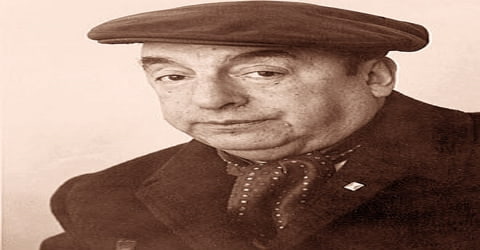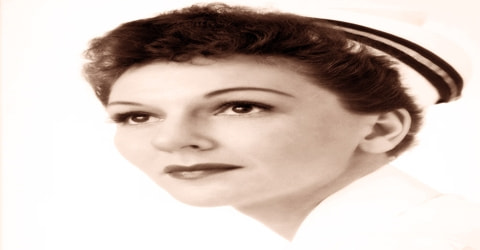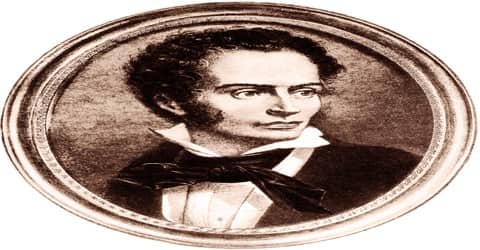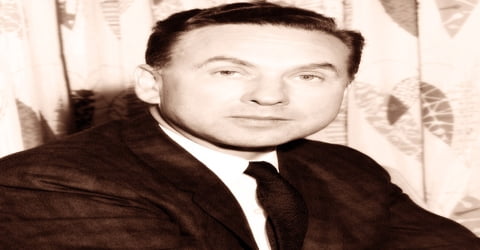Biography of Pablo Neruda
Pablo Neruda – Chilean poet-diplomat and politician.
Name: Ricardo Eliécer Neftalí Reyes Basoalto
Date of Birth: July 12, 1904
Place of Birth: Parral, Maule Region, Chile
Date of Death: September 23, 1973 (aged 69)
Place of Death: Santiago, Chile
Father: José Del Carmen Reyes Morales
Mother: Rosa Basoalto
Occupation: Poet, diplomat, senator
Spouse: Matilde Urrutia (m. 1966–1973), Maryka Antonieta Hagenaar Vogelzang (m. 1930-1942), Delia del Carril (m. 1943-1966)
Children: Malva Marina Trinidad
Early Life

Pablo Neruda, Chilean poet, diplomat, and politician who was born on 12 July 1904, in Parral, Chile, a city in Linares Province, now part of the greater Maule Region, some 350 km south of Santiago, to José del Carmen Reyes Morales, a railway employee, and Rosa Basoalto, a schoolteacher who died two months after he was born. Neruda became known as a poet when he was 13 years old, and wrote in a variety of styles, including surrealist poems, historical epics, overtly political manifestos, a prose autobiography, and passionate love poems such as the ones in his collection Twenty Love Poems and a Song of Despair (1924). He won the Nobel Prize for Literature in 1971.
His poetic flair was, without doubt, one of the finest of his time, for which he received a number of accolades and honors, including the Nobel Prize for literature. This Chilean poet has been named one of ‘the greatest poets of the 20th century in any language’ for his large repertoire of works, typically based on surrealistic, erotic or historical themes. Most of his poetry was written in the Spanish language and many readers from around the world found it difficult to disentangle Neruda’s poetry from his zealous obligation to socialism.
Neruda occupied many diplomatic positions in various countries during his lifetime and served a term as a Senator for the Chilean Communist Party. When President Gabriel González Videla outlawed communism in Chile in 1948, a warrant was issued for Neruda’s arrest. Friends hid him for months in the basement of a house in the port city of Valparaíso; Neruda escaped through a mountain pass near Maihue Lake into Argentina. Years later, Neruda was a close advisor to Chile’s socialist President Salvador Allende. When Neruda returned to Chile after his Nobel Prize acceptance speech, Allende invited him to read at the Estadio Nacional before 70,000 people.
His works that are available or decoded in English embody only a small percentage of his over-all yield today. Today, many of his works conjure vivid imagery and are capable of rousing the soul.
Neruda is often considered the national poet of Chile, and his works have been popular and influential worldwide. The Colombian novelist Gabriel García Márquez once called him “the greatest poet of the 20th century in any language”, and Harold Bloom included Neruda as one of the 26 writers central to the Western tradition in his book The Western Canon.
Childhood, Family and Educational Life
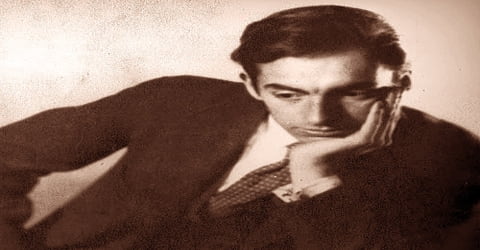
Pablo Neruda, original name Neftalí Ricardo Reyes Basoalto, was born July 12, 1904, Parral, Chile. He was the son of José del Carmen Reyes, a railway worker, and Rosa Basoalto, a teacher. His mother died within a month of Neruda’s birth, and two years later the family moved to Temuco, a small town farther south in Chile, where his father remarried. Neruda grew up in Temuco with Rodolfo and a half-sister, Laura, one of his father’s children by another woman. He composed his first poems in the winter of 1914. Neruda was an atheist.
He entered the Temuco Boys’ School in 1910 and finished his secondary schooling there in 1920. Tall, shy, and lonely, Neruda read voraciously and was encouraged by the principal of the Temuco Girls’ School, Gabriela Mistral, a gifted poet who would herself later become a Nobel laureate.
In 1921, at the age of 16, Neruda moved to Santiago to study French at the Universidad de Chile, with the intention of becoming a teacher.
In 1927, out of financial desperation, he took an honorary consulship in Rangoon, the capital of the British colony of Burma, then administered from New Delhi as a province of British India. Rangoon was a place he had never heard of before.
Personal Life
Neruda married a bank employee, Maryka Antonieta Hagenaar Vogelzang, while he worked a shift in Java. His daughter, Malva Marina (Trinidad) Reyes, was born in Madrid in 1934; she was plagued with health problems, especially hydrocephalus, during her short life. Born in Madrid in 1934 to Neruda and his first wife Marijke Antonieta Hagenaar Vogelzang (known as Maruca), whom he met while serving in a diplomatic post in the Dutch East Indies, Malva Marina Trinidad del Carmen Reyes suffered from hydrocephalus.
She died in 1942, spending most of her life with a foster family in the Netherlands after Neruda ignored her and her mother took what jobs she could after their 1936 divorce. Half that time was during the Nazi occupation of Holland when birth defects denoted genetic inferiority at best. During this period, Neruda slowly became estranged from his wife and began a relationship with Delia del Carril (es), an Argentine twenty years his senior.
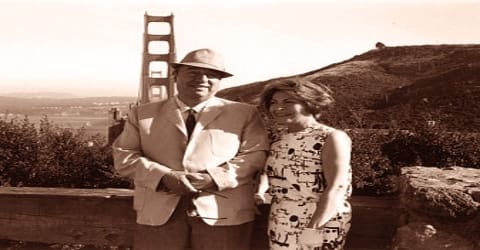
(Pablo Neruda and wife Matilde Urrutia)
A Chilean singer, Matilde Urrutia was hired to care for him during his exile, and he started having an affair with her. This eventually culminated in marriage and she even became his ‘muse’ for one of his works.
After returning to Chile from exile, he got back with his wife, del Carril, but the marriage began to disintegrate. She eventually learned of his affair with Urrutia and Neruda went back to Urrutia, with whom he would live for the rest of his life.
Career and Works
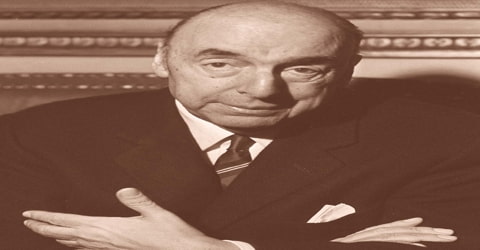
Neruda’s father opposed his son’s interest in writing and literature, but he received encouragement from others, including the future Nobel Prize winner Gabriela Mistral, who headed the local school. On July 18, 1917, at the age of thirteen, he published his first work, an essay titled “Entusiasmo y perseverancia” (“Enthusiasm and Perseverance”) in the local daily newspaper La Mañana, and signed it Neftalí Reyes. From 1918 to mid-1920, he published numerous poems, such as “Mis Ojos” (“My eyes”), and essays in local magazines as Neftalí Reyes. In 1919, he participated in the literary contest Juegos Florales del Maule and won third place for his poem “Comunión ideal” or “Nocturno ideal”.
In 1921 he moved to Santiago to continue his studies and become a French teacher. There he experienced loneliness and hunger and took up a bohemian lifestyle.
In 1923, he sold all of his belongings to back the publication of his first book, ‘Crepusculario’ (Book of Twilights) under his pen name. He used the alias in order to evade skirmishes with his family, who objected to making writing his occupation.
He also published a collection of love poems that became controversial for its amatory themes titled, ‘Viente poemas de amor y una cancion desesperada’ (Twenty Love Poems and a Song of Despair), in 1924. A second edition was also published much later. By the age of 20, he had established himself as a sound poet, but he was facing extreme poverty.
Many people recommend reading Pablo Neruda’s poems in the original Spanish if possible since they think they lose some of their meaning when translated; however, even his poems that have been translated to other languages are well-respected and considered great works of literature.
In 1926, he published the collection Tentativa del hombre infinito (The Attempt of the Infinite Man) and the novel El habitante y su esperanza (The Inhabitant and His Hope). In 1927, out of financial desperation, he took an honorary consulship in Rangoon, the capital of the British colony of Burma, then administered from New Delhi as a province of British India. Rangoon was a place he had never heard of before. Later, mired in isolation and loneliness, he worked in Colombo (Ceylon), Batavia (Java), and Singapore. In Java the following year he met and married his first wife, a Dutch bank employee named Marijke Antonieta Hagenaar Vogelzang. While he was in the diplomatic service, Neruda read large amounts of verse, experimented with many different poetic forms, and wrote the first two volumes of Residencia en la Tierra, which includes many surrealist poems.
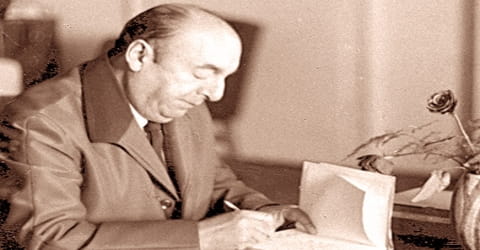
Yet his poetry was not a steady source of income, so he translated hastily from several languages and published magazine and newspaper articles. Neruda’s future looked uncertain without a steady job, so he managed to get himself appointed an honorary consul to Rangoon in Burma (now Yangôn, Myanmar). For the next five years, he represented his country in Asia. He continued to live in abject poverty, however, since as honorary consul he received no salary, and he was tormented by loneliness.
Out of financial anxiety, he took up honorary consulship in Rangoon, which was then a part of Burma, and isolated himself from people where he experimented with different kinds of poetry. In 1933, he penned the first of the three volumes of a poetry collection, ‘Residencia En La Tierra’ (Residence on Earth), which would later spawn two more volumes.
In 1930 Neruda was named consul in Batavia (modern Jakarta), which was then the capital of the Dutch East Indies (now Indonesia). There he fell in love with a Dutch woman, Maria Antonieta Hagenaar, and married her. In 1932 Neruda returned to Chile, but he still could not earn a living from his poetry. In 1933 he was appointed Chilean consul in Buenos Aires, Argentina. There he met the Spanish poet Federico García Lorca, who at that time was traveling in Argentina and who was to become a close friend and an enthusiastic defender of Neruda’s poetry.
After he returned to Chile, he served a number of diplomatic posts and at the inception of the civil war, he became extremely involved with politics. In order to show his support for the Republican side, he voiced his thoughts and his support in the collection, ‘Espaa en el corazn’ (Spain in the Heart), in 1938. After the election in 1938, he was appointed as superior consul for Spanish immigration in Paris. Here, he was assigned the task of making sure he sent Spanish refugees back to Chile in a boat called, ‘Winnipeg’.
Neruda’s next diplomatic post was as Consul General in Mexico City from 1940 to 1943. In 1943, he returned to Chile and visited the famous Machu Picchu, which inspired an enormous twelve-part poem titled, ‘Alturas de Macchu Picchu’.
During World War II, he grew to admire the Soviet Union’s Joseph Stalin, who was responsible for defeating Nazi Germany. He voiced his admiration for the leader in poems like ‘Canto a Stalingrado’ and ‘Nuevo canto de amor a Stalingrado’, written between 1942 and 1943.
In July 1945, Neruda gave a reading to 100,000 people. The reading was dedicated to Luis Carlos Prestes, the Communist revolutionary leader. Neruda was a member of the Chilean Communist party and even represented the party as a senator. Due to his political ideology, Pablo Neruda had a warrant issued for his arrest in 1948. He spent months in hiding before escaping from Chile. Before being driven into hiding, Neruda also held diplomatic positions, following in the footsteps of many other Latin American poets.
During this time, he traveled extensively around Europe, Asia, and the Soviet Union. From 1950 to 1952, he authored the famous ‘Canto General’, which contains over 231 poems and also published ‘Los versos del Capitn’, under an anonymous name.
Towards the end of 1952, he got back to Chile and by this time, was already enjoying the worldwide fame as a poet. Around fourteen years later, he was invited for the International PEN conference in New York City.

Neruda also called Vladimir Lenin the “great genius of this century”, and in a speech he gave on June 5, 1946, he paid tribute to the late Soviet leader Mikhail Kalinin, who for Neruda was “man of noble life”, “the great constructor of the future”, and “a comrade in arms of Lenin and Stalin”.
Neruda later came to rue his seduction by the personality cult, explaining that “in those days, Stalin seemed to us the conqueror who had crushed Hitler’s armies.” Of a subsequent visit to China in 1957, Neruda wrote: “What has estranged me from the Chinese revolutionary process has not been Mao Tse-tung but Mao Tse-tungism.” He dubbed this Mao Tse-Stalinism: “the repetition of a cult of a Socialist deity.” Despite his disillusionment with Stalin, Neruda never lost his essential faith in Communist theory and remained loyal to “the Party”. Anxious not to give ammunition to his ideological enemies, he would later refuse publicly to condemn the Soviet repression of dissident writers like Boris Pasternak and Joseph Brodsky, an attitude with which even some of his staunchest admirers disagreed.
While traveling in Europe, Cuba, and China, Neruda embarked upon a period of incessant writing and feverish creation. One of his major works, Odas elementales (Elemental Odes), was published in 1954. Its verse was written in a new poetic style simple, direct, precise, and humorous and it contained descriptions of everyday objects, situations, and beings (e.g., “Ode to the Onion” and “Ode to the Cat”). Many of the poems in Odas elementales have been widely anthologized.
During the late 1960s, Argentine writer Jorge Luis Borges was asked for his opinion of Pablo Neruda. Borges stated, “I think of him as a very fine poet, a very fine poet. I don’t admire him as a man, I think of him as a very mean man.” He said that Neruda had not spoken out against Argentine President Juan Perón because he was afraid to risk his reputation, noting “I was an Argentine poet, he was a Chilean poet, he’s on the side of the Communists, I’m against them. So I felt he was behaving very wisely in avoiding a meeting that would have been quite uncomfortable for both of us.”
In 1969 Neruda campaigned for the leftist candidate Salvador Allende, who appointed him ambassador to France after being elected president of Chile. While already ill with cancer in France, Neruda in 1971 learned that he had been awarded the Nobel Prize for Literature. After traveling to Stockholm to receive his prize, he returned to Chile bedridden and terminally ill and survived by only a few days his friend Allende, who died in a right-wing military coup.
In 1970, he was nominated as a candidate for the Chilean presidency, but he instead let Salvador Allende win the elections. Shortly after Allende was made president, Neruda was appointed as the Chilean ambassador to France. During his stint in Paris, Neruda helped to renegotiate the external debt of Chile, billions owed to European and American banks, but within months of his arrival in Paris, his health began to deteriorate. Neruda returned to Chile two and half years later due to his failing health.
Neruda wrote extensively. His complete works total over 3,000 pages. Twenty Love Poems and a Song of Despair is Pablo Neruda’s most famous collection of poetry. Neruda’s love poems are considered particularly evocative because he combines the traditional elements of love poetry (such as relationships and feelings between two people) and mixes them with his relationship with Chile and the wilderness.
‘Viente poemas de amor y una cancion desesperada’ (Twenty Love Poems and a Song of Despair)’, published in 1924 was his second published work and established his name as a poet. This work, although controversial, came to be known as one of his greatest works and has been translated into various languages. The ‘poemas’ has sold over a million copies around the world and although it was his early work, it is largely considered his ‘best-known work’.
Awards and Honor
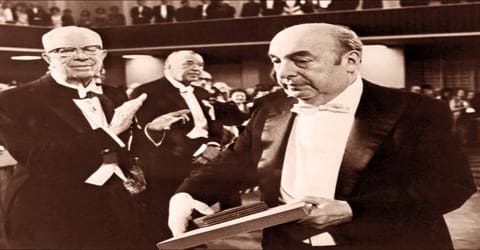
In 1953, Neruda was awarded the Stalin Peace Prize.
Pablo Neruda was awarded the Nobel Prize for Literature in 1971. The following year Neruda was awarded the prestigious Golden Wreath Award at the Struga Poetry Evenings.
He has been mentioned in popular culture in films, literature, and music. These include mentions of his name or his works in movies like ‘Pablo Neruda: The Poet’s Calling’, the book, ‘El caso Neruda’ or in albums like, ‘The Pretender’ and ‘Neruda Songs’. He also had three houses in Chile, all of which have been made into public museums.
Death and Legacy
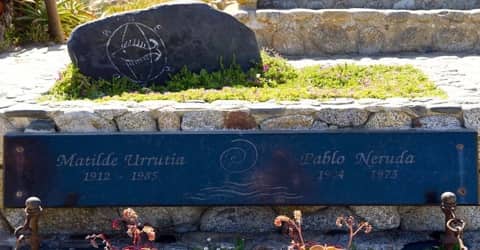
It was originally reported that, on the evening of September 23, 1973, at Santiago’s Santa María Clinic, Neruda had died of heart failure. There were suggestions that this famous Chilean writer and diplomat was killed during the Pinochet Regime, and in order to get to the truth, orders were given by the Chilean government, to exhume the remains of this great personality to carry out lab tests.
On May 12, 2011, the Mexican magazine Proceso published an interview with his former driver Manuel Araya Osorio in which he states that he was present when Neruda called his wife and warned that he believed Pinochet had ordered a doctor to kill him and that he had just been given an injection in his stomach. He would die six and a half hours later. Even reports from the pro-Pinochet El Mercurio newspaper the day after Neruda’s death (refer) to an injection immediately beforehand. According to an official Chilean Interior Ministry report prepared in March 2015 for the court investigation into Neruda’s death, “he was either given an injection or something orally” at the Santa María Clinic “which caused his death six-and-a-half hours later.
Following his death, his autobiography, ‘I Confess I have Lived’ was published and Urrutia’s memoir titled, ‘My Life with Pablo Neruda was published in the 1980s.
Neruda’s body of poetry is so rich and varied that it defies classification or easy summary. It developed along four main directions, however. His love poetry, such as the youthful Twenty Love Poems and the mature Los versos del Capitán (1952; The Captain’s Verses), is tender, melancholy, sensuous, and passionate. In “material” poetry, such as Residencia en la Tierra, loneliness and depression immerse the author in a subterranean world of dark, demonic forces. His epic poetry is best represented by Canto general, which is a Whitmanesque attempt at reinterpreting the past and present of Latin America and the struggle of its oppressed and downtrodden masses toward freedom. And finally, there is Neruda’s poetry of common, everyday objects, animals, and plants, as in Odas elementales.
Information Source:
